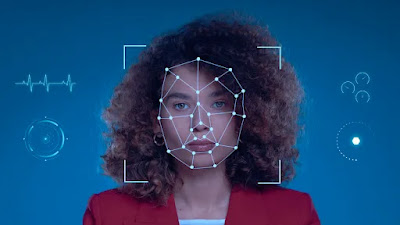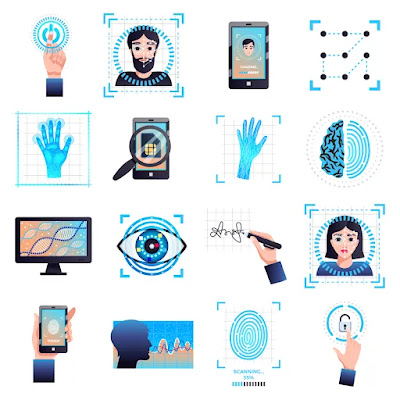Image Recognition Decoded: Picturing Computer Vision
Setting the Stage: Understanding Image Recognition and Computer Vision
The Visual Revolution: Why Image Recognition Matters
Imagine living in a society where automobiles can recognize pedestrians, smartphones can open with your face, and computers can help with medical diagnosis. This is the revolution in visual communication that image recognition has sparked. Image Recognition is revolutionizing industries, from healthcare to manufacturing, by processing visual data quickly and accurately, leading to a more automated and efficient future.The Basics of Image Recognition
Defining Image Recognition: Unraveling the Concept
A fascinating process that is analogous to teaching a computer the skill of understanding visual language takes place in the dynamic world of image recognition and computer vision. Fundamentally, image recognition gives computers the amazing capacity to identify and categorize objects, situations, and even text that is hidden within photographs.Imagine a
computer reading an image and understanding its content in a manner similar to
how the human brain interprets visual data.The world of algorithms and machine learning is where this
marvel's heart is. Computers unravel the mystery that visual data presents by
sorting through complex patterns and identifying tiny characteristics.
They are
able to translate the interaction of shapes, edges, and textures into valuable
insights thanks to these algorithms. Imagine the possibilities: a machine might
look at a snapshot to understand its components as well as just viewing them.
Through the combination of algorithms and machine learning, Image Recognition paves the way for machines to figure out the visual world. The outcome? A technology that transcends basic pixels, transforming digital imagery into a language both man and machine can fluently speak.
How Image Recognition Works: From Pixels to Patterns
The orchestra of Computer Vision conducts Image Recognition like a visual symphony. This fascinating approach relies on pixel-level analysis at its foundation. Imagine an image as a canvas covered in countless tiny dots; these are the intricate "pixels" that make up an image. Computers take on the role of identifying choreographers in this dance of digital brilliance.Computers precisely organize a complicated ballet of patterns and relationships by breaking down images into their component pixels. Each color and shading blends perfectly with its surrounding pixels to create the masterpiece. This thorough investigation exposes a complex weave of intricate details. The computer can tell the difference between the royal profile of a cat and the beautiful shape of a flower vase thanks to this outstanding performance.
Types of Image Recognition: Object, Face, Text, and More
- Object Recognition: Overcomes linguistic obstacles to identify objects in photos using object recognition. A machine's vision, which uses pixel-level understanding, can tell a chair from a table.
- Face recognition: A beautiful biometric identification ballet. Machines mimic human brains' capacity for facial differentiation to ensure secure access and identity authentication.
- Text Recognition: Transforming visuals into masters of text interpretation. Because computers can read and understand text embedded in images, the written word is now available digitally.
The Inner Workings of Computer Vision
Demystifying Computer Vision: Beyond Traditional Image Processing
Computer Vision takes Image Recognition a step further. While Image Recognition focuses on labeling and categorizing images, Computer Vision aims to understand and interpret the content of those images. This includes recognizing context, understanding relationships between objects, and even predicting future actions.Computer Vision Algorithms: Algorithms That See
Computer Vision is driven by complex algorithms that process visual data. These algorithms mimic the human brain's neural networks, enabling computers to recognize patterns, edges, shapes, and more, just as a human would. Convolutional Neural Networks (CNNs) are a prime example of these algorithms that excel at image analysis.Role of Machine Learning: Teaching Computers to Interpret Visual Data
Machine learning plays a essential role in Computer Vision. Through exposure to a vast dataset of images, machines "learn" to recognize features and patterns. This training equips them to make accurate predictions and interpretations when faced with new visual data.Applications in Real Life
Image Recognition in Everyday Tech: From Smartphones to Social Media
Enhancing Medical Diagnosis: Computer Vision in Healthcare
Industrial Applications: Automating Processes with Visual Data
Challenges and Innovations
Overcoming Obstacles: Challenges in Accurate Image Recognition
Image Recognition must deal with practical problems while flexing its technological muscles. There is a constant struggle against various viewpoints and illumination. It becomes increasingly difficult to maintain pin-point accuracy in a variety of situations. But overcoming these obstacles is still essential to bringing Computer Vision's amazing world of visual understanding to its full potential.Deep Learning Breakthrough: Convolutional Neural Networks (CNNs)
Computers
are propelled by this fusion of creativity and replication to identify
patterns, edges, and features in images, mimicking human visual perception.
CNNs are leading the deep learning revolution, bringing in an age of precise,
multi-layered understanding that goes beyond the limitations of simple pixels.
Addressing Bias in Image Recognition: Striving for Fairness
Image Recognition isn't immune to bias. It can inadvertently discriminate based on factors like race or gender. Innovators are working to eliminate such biases and create a fairer technological landscape.Ethics and Privacy Considerations
Data Privacy Concerns: Balancing Convenience and Privacy
Our digital interactions are made more convenient by Image Recognition, yet data privacy is a cause for concern. Our photographs become priceless bits of data when viewed through the lenses of pixels and patterns. It is crucial to keep them safe. Finding the right balance between the necessity of ethical data processing and the attractiveness of frictionless interactions is a difficult dance.A fundamental problem arises as we navigate
the complex terrain of computer vision: how do we use image recognition to our
advantage while upholding the value of individual privacy? The solution comes
in adopting moral behaviors that make sure technology spins a web of innovation
without tearing our privacy's fabric.
Bias and Fairness: Navigating Ethical Issues in Image Recognition
The responsibility of fairness lies with developers. Avoiding biased data and training models that reflect diverse groups is vital to uphold ethical standards.The Future of Image Recognition and Computer Vision
AI and the Future: Evolving Trends in Visual AI
The future of image recognition and computer vision is being guided by Artificial Intelligence (AI), which is emerging as the compass. AI takes these fields into uncharted area by analyzing every byte of data and pixel. AI-driven insights emerge and establish themselves as the digital patterns is created. Industries prepare for a paradigm change as AI adds unmatched precision to human decision-making.The emergence of intelligent
machines does not pose a threat to human involvement; rather, it signals a time
when human brains and AI will mutually interact, pushing the bounds of what is
possible. The development of Visual AI points us toward a future in which
pixels have the ability to explain the extraordinary as Artificial Intelligence
advances.
Beyond Images: Image Recognition's Potential in Video and Beyond
Image Recognition isn't confined to static images. Its potential extends to videos, allowing machines to understand actions, behaviors, and movements.Augmented Reality (AR) and Virtual Reality (VR): Shaping the Visual Landscape
While VR transports us to other worlds, AR enhances our
interactions by superimposing real-time insights onto our perception. The
dynamic combo of AR and VR creates a new world where pixels and imagination
combine to change our visual environment rather than merely improving how we
perceive reality.
Tips for Implementing Image Recognition
Getting Started: Steps to Integrate Image Recognition
Beginners travel a route illuminated by curiosity and invention as they embark on the fascinating journey of image recognition. Start by learning the fundamentals and getting familiar with the core concepts of this online dance. Discover the amazing pre-built models that professionals have created to fully grasp the complex algorithmic symphony.Start off simply
by understanding how the pixels work together to create meaning. Explore the
world of complexity more thoroughly over time by testing out concepts that go
beyond the obvious. Your skill in image recognition improves with each stage as
you discover the magic of pixels, patterns, and the limitless potential of
visual perception.
Choosing the Right Tools: Software and Libraries for Image Recognition
Developers use a wide variety of tools, libraries, and frameworks in the dynamic field of image recognition to bring their ideas to life. Enter the titans of this digital creativity, TensorFlow and OpenCV. With its deep learning capabilities, TensorFlow unleashes the ability to build neural networks that are fluent in the pixel-based language.For computer vision,
OpenCV unfolds a toolkit that offers a variety of processing and analysis
options for images. These innovative tools turn lines of code into beautiful
visual compositions, elevating image recognition from an ordinary technological
effort to a type of visual art.
Best Practices: Ensuring Accuracy and Performance
Data quality is paramount. Ensure your training dataset is diverse and representative. Regular updates and retraining also improve accuracy.Conclusion
The Visual Frontier: Reflections on Image Recognition and Computer Vision
As we bid adieu, let's reflect on the awe-inspiring journey we've taken through Image Recognition and Computer Vision. From decoding concepts to exploring applications, we've delved into a realm where machines bridge the gap between pixels and perception.Unlocking Possibilities: Embracing the Visual AI Revolution
The revolution of Image Recognition and Computer Vision isn't just a technological marvel; it's an invitation to unlock new possibilities. As we embrace this revolution, we step into a world where pixels are no longer passive dots, but windows to a realm of insight and innovation.
Tags:
Machine Learning








